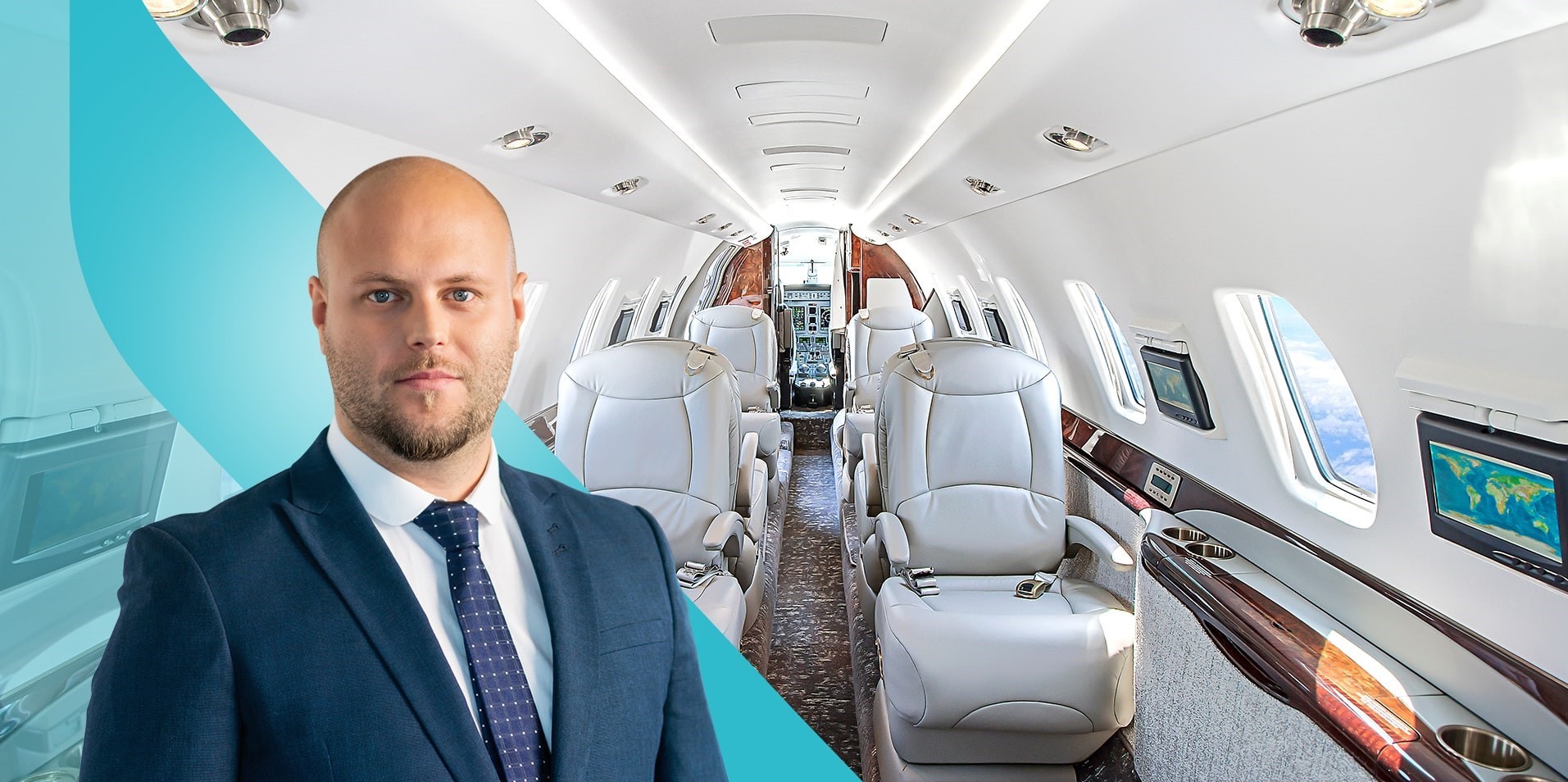Ever flirted with the idea of hiring a private jet? Find out the main types of planes, making the choice of personal airplane as breezy as the wind rushing past the window post-take-off.
Hiring a private jet is like starting a relationship: establish your needs and expectations, and then select a suitor that meets them. It’s impossible to make that choice, though, if you don’t know which option offers what (do they really like Chinese food, or are they just saying that to impress me?). At risk of straining this analogy: there are plenty of fish in the sea, and this article is like someone lending you a good rod.
To make navigating plane types that much more manageable, the vast cornucopia of types of planes can be broken down into five simple aircraft categories. Once you’ve settled on the right category of private airplane for your needs, you’ll be equipped to make a much better decision about which private jet to hire, saving you time and money and making your experience as hassle-free as possible – if only every choice in life could be as straightforward! This is charter travel made easy.
“There’s a private airplane out there to suit every budget and need”, according to Igor Borzov Head of Procurement Department at Skyllence, “but most clients don’t know enough about the industry to be direct about their requirements. Often, when we ask them ‘How many passengers?’ or ‘How far do you want to travel?’, they haven’t finalized these details, so it’s difficult to match them up with the perfect personal airplane. Getting a more defined sense of what you need can allow personal jet providers to suggest a private jet charter that’s exactly what you’re looking for – even if you don’t know yourself!”
Before your business trip, friendly get together, or family outing heads for the skies, this article will help you to choose the perfect type of private jet hire. Once that’s decided and everything’s taken care of, all that’s left is to watch the world pass by your window!
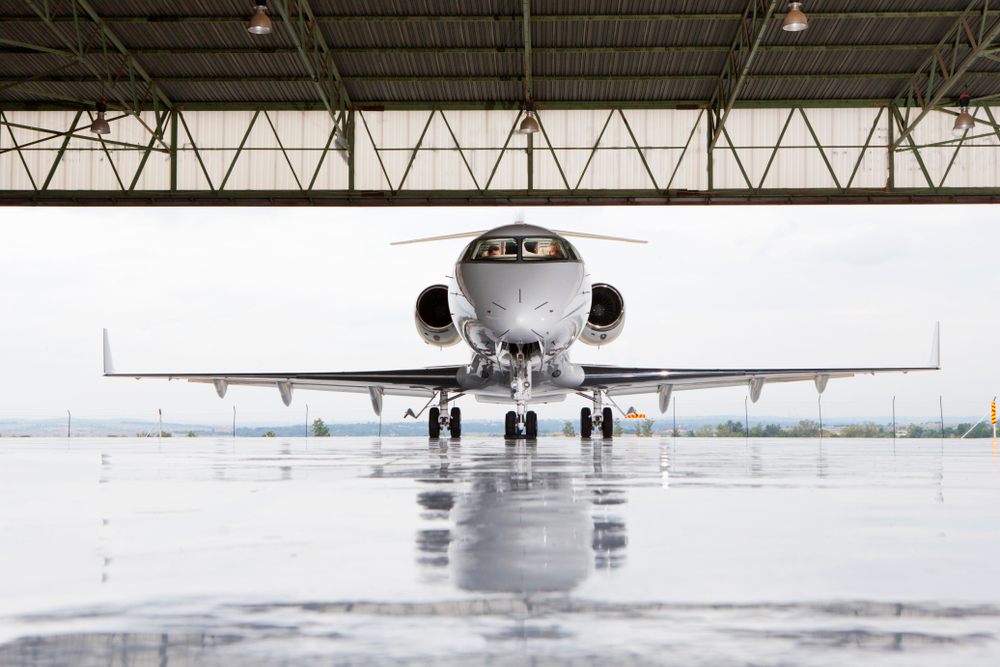
Turboprops
Key features:
- Smaller passenger numbers
- Small cabin size
- Limited amenities
- Short range
- Weather-dependent
- Cheaper
Let’s say you and your family want to head to a remote destination that’s embedded deep within a jungle via charter flight. It might be best to park the 747 for this one, as the tiny airstrip calls for something a little more nip-tuck. Turboprop private aircraft are perfect for these kinds of journeys, as their agility and relatively slow speed enable them to take off and land like a hummingbird.
This is a key advantage that isn’t limited to extreme geographic examples, either. We’ve all been to those towns in the middle of nowhere that somehow seem to have missed out on the last few hundred years (you know the type). With turboprop private aircraft, rather than landing nearby in the 21st century and then taking a car for a few hours, you can fly directly to your destination, conclude your business, and then it’s wheels up and back to the future in no time at all. Great Scott!
The key benefits and the minor drawbacks of turboprops all revolve around their defining characteristic: their engines. Because of these, they’re cheaper and more agile than other categories of executive jets. Conversely, they’re also limited in the number of passengers they can accommodate, slower, possess shorter ranges, and are weather-dependent. There are also tight restrictions on baggage capacity and weight – maybe best to leave the kitchen sink at home for this kind of charter travel!
What this means is that you have to be specific about your journey. If these drawbacks aren’t relevant to you and you like the idea of a nimble flyer that’s much more cost-effective than its behemoth cousins, then something like the King Air 200, Cessna Grand Caravan, or the Pilatus PC-12 might be the private jet hire for you.
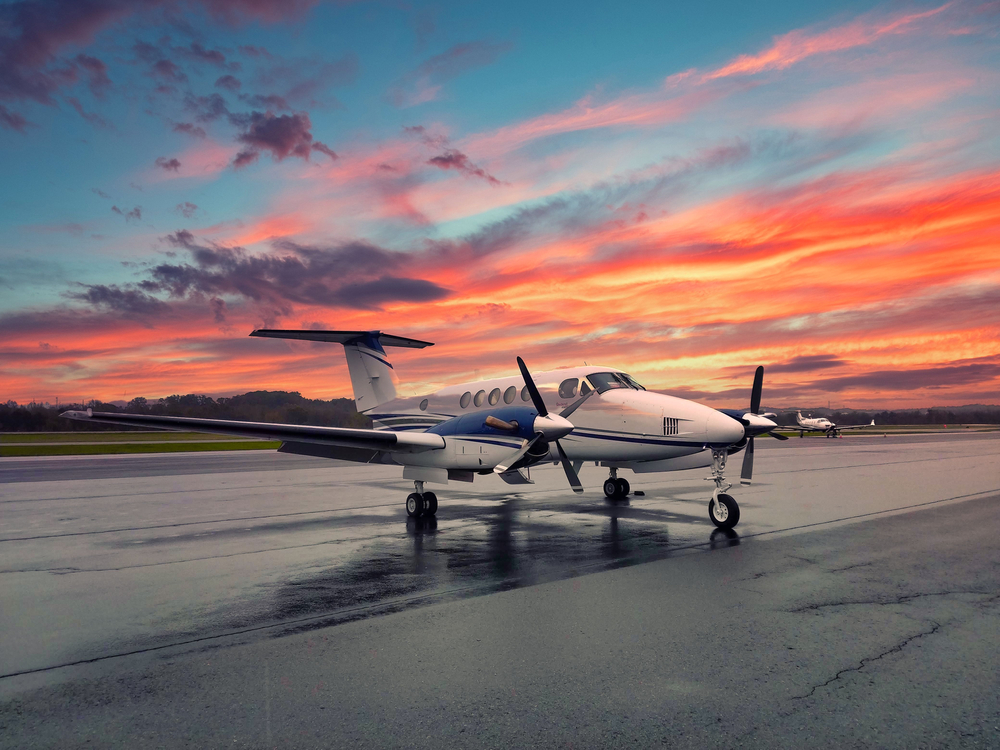
Light Private Jets
Key features:
- 5–8 passengers
- Slightly larger cabin size
- Medium range
- Retain access to small airfields
Light private jets are a step above their Turboprop cousins, as they come packed with the power of jet engines. If you want some of the advantages that turboprop aircraft can offer but you’re looking for a little more speed or a smidge more range, then perhaps you should travel light.
These types of planes are your jack-of-all-trades business aircraft, meaning that if you’re not too picky about any one aspect of your trip, this might be the best place to start looking for a specific private jet hire. This is both the biggest strength and the main weakness of light business jets: they’re pretty good at everything but the best at nothing. While midsize aircraft might offer a better range, and the luxury of a heavy jet is hard to beat, if it’s versatility that you’re after then the light private jet charter is your go-to.
Because light private jets are suitable for such a broad range of business uses, they tend to be the most popular charter flights. This also means that there’s a much wider range of light aircraft than in any other category – a nightmare for the indecisive private traveller! To begin with, check out the very light Hondajet or the Citation Mustang. If you’re looking for something slightly larger, consider the Embraer Phenom 300, the Citation CJ3, or maybe even the Learjet 40 – all great examples of light private jets that are designed to suit a broad range of charter travel needs.
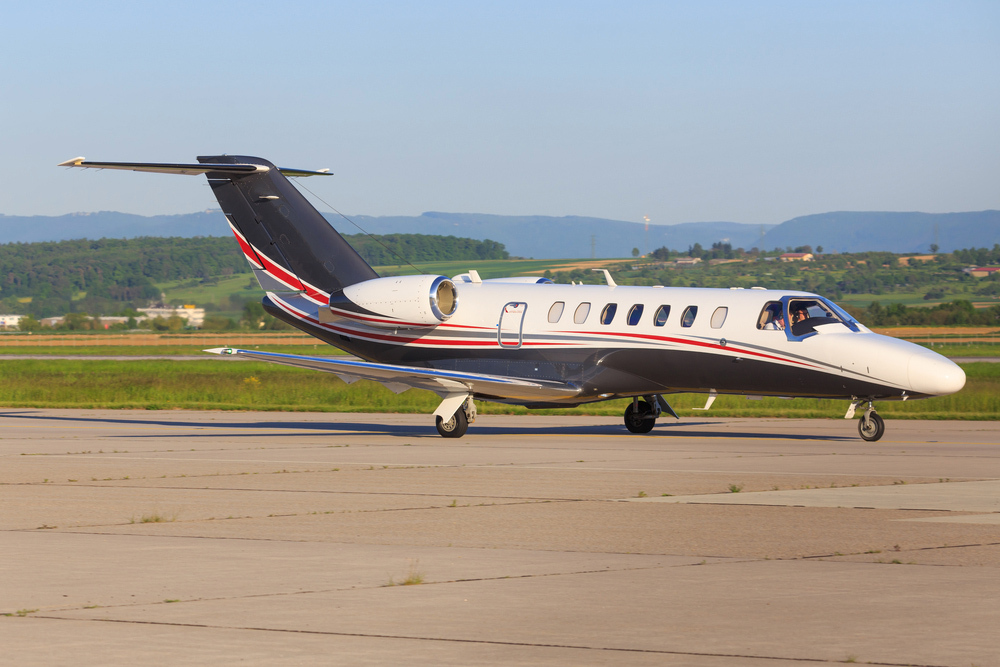
Midsize Private Jets
Key features:
- 6–9 passengers
- Bigger cabins
- Longer ranges
- Some can potentially still use smaller airfields
- Higher speeds
Now we’re getting into the territory of what most people think of when they hear “private jet”. Enhanced range, higher speeds, and more space are key advantages that clients seek when considering midsize private jet charter travel. In terms of size, their position on the precipice of the larger private jet hires allows them to keep some of the manoeuvrability of their little brothers.
Incidentally, these are also the types of planes that the great and the good nip around in – world leaders, heads of industry, even reality tv stars. Arguably, the best thing about these kinds of private jet is that they exist at all, as without them there would remain the possibility that these demigods would have to downsize or, perish the thought, fly commercially alongside people like us.
Celebrity owners aside, when used for business these types of aircraft are a cut above the two categories discussed earlier. The key advantages of mid-size airplanes are their better basic passenger service capabilities and enhanced amenities. However, whilst the gap between light and midsize aircraft in terms of passenger occupancy is not too dramatic, distance is where it really shows. If you’ve got eyes on another continent, the Learjet 60, the Bombardier Challenger 300, or the Hawker 850 could be exactly what you’re looking for.
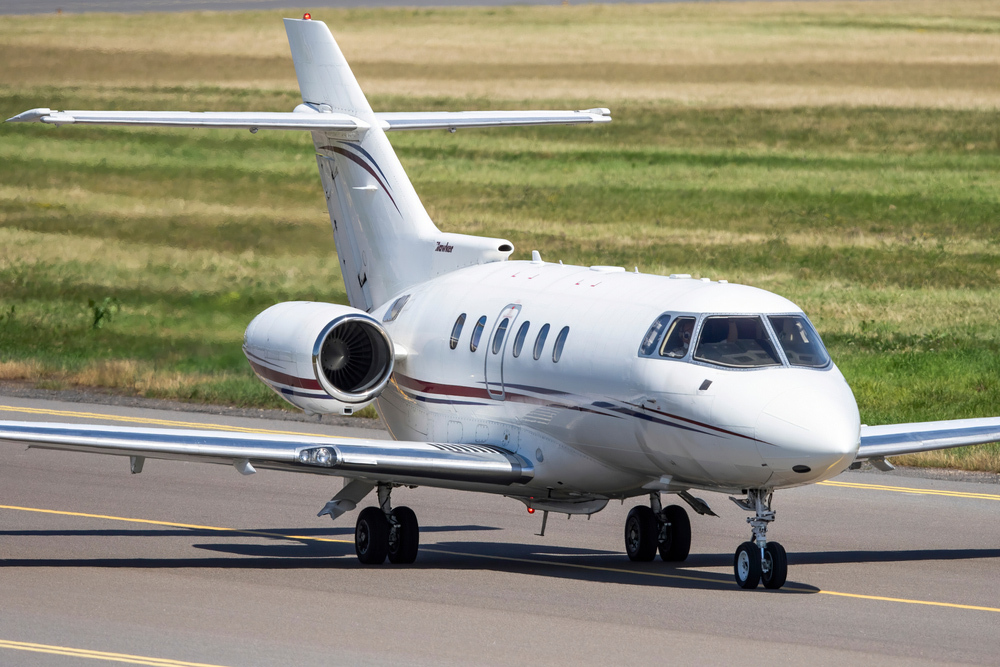
Heavy Jets
Key features:
- 10–15 passengers
- Spacious
- Enhanced comfort
- High speed
- Long runways required
Let’s be frank: these are serious pieces of kit. If your needs are a little larger, there’s now the potential to take way more staff on business trips. Ever been in a negotiation and had to face awkward questions about the intricacies of your processes that you don’t really know how to answer? Heavy private jets offer the perfect solution: bring the people who designed them. Alternatively, that side of the family that you’ve been avoiding for years can now come with you on holiday – great news!
The jump up in size that comes with this aircraft category carries with it some other key strengths that might not be so obvious. Because they’re much bigger, these private jet charters can easily accommodate larger fuel reserves, meaning that we’re now getting into longer distances. These types of planes also cruise at higher altitudes, so there’s a reduced risk of turbulence and, as anyone who has been on an A-380 will tell you, the bigger the plane the smoother the experience of take-off and landing.
If you’re in a hurry, the Challenger 850, Legacy 650, and Falcon 900 all cruise above 850km/h, meaning that you’ll be touching down before you’ve had chance to sip the last remnants of your on-board martini. If all of those sound perfect for your private jet hire, you might have just settled on the right category for you and your business.
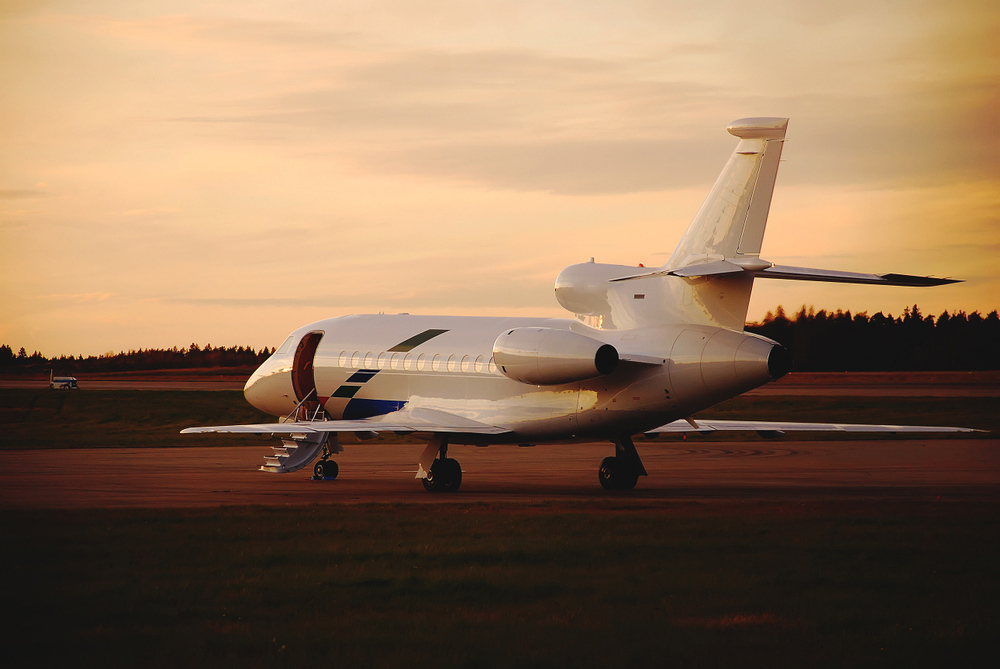
Ultra Long Range
Key features:
- Up to 18 passengers
- Huge interiors
- Massive range, potentially saving hours if refuelling is avoided.
- Much faster cruising speeds
- Weather independent
- Extremely expensive
Ultra-long range private jets are, to use the technical term, “big”. Forgive the jargon, but they’re just really, really big. They’re generally owned by the kind of people who spend millions of dollars to make sure that you’ve never heard of them, but they can be surprisingly cost-effective for use in executive business travel via a charter flight. Their cavernous interiors mean that you can configure them to the exacting standards of your business – mobile workstation, anyone? If you can work while travelling, you’ve essentially added the duration of your journey to the amount of productive time available to your company, and we’re all familiar with the old adage that “time is money”.
On the topic of time, anyone familiar with the purgatorial wilderness of a departure lounge wait for a connecting flight will tell you that it’s best to go direct. What if your destination is a serious distance away, though? When you’re going on holiday, do you subject your extended family to an agonising lay-over in some cardboard cut-out furniture suite from the ‘90s (with those seat covers)? That’s one option. Another is to go with an ultra-long range jet and ensure that you arrive refreshed, relaxed, and ready to do enjoy yourselves thanks to your choice of personal airplane.
One drawback is that only the most modern and up-to-date airports can handle these chunky arrivals, meaning that more remote destinations might be out of bounds. Their size can require longer runways, better facilities, and an all-round more involved procedure. Let’s be honest, though, if you’re chartering one of these beasts it’s unlikely you’ll be headed to the kind of remote locale that would struggle to accommodate them, and if you do need to go off-map you can always refer back to the first part of this article – I swear, sometimes it’s like someone plans this stuff!
If you’ve got the funds and the fancy for one of these almighty aircraft, you might look to the obscene range of the Gulfstream G7500, or the voluminous cabin size of the Lineage 1000 for your charter flight. The latter of these two really does offer a serious bit of room, with a capacity of up to 19 ensuring that everyone who needs to attend your family holiday, friend group weekend away, or corporate travel venture has room on board.
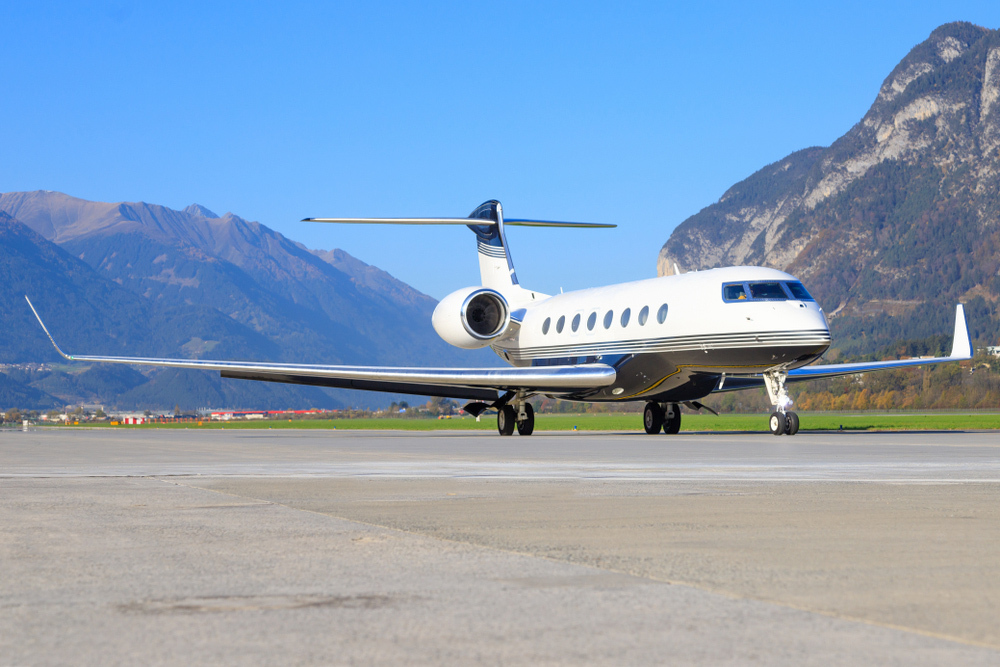
Decisions, decisions…
Now that you’re stuffed full of knowledge about the types of private jet charter available on the market, you’re much better equipped to decide on which category to dive into. From here, the process here is simple: outline your needs, eliminate those options that don’t meet them, and then select from whichever types of planes are left. Failing that, there’s always another option – leave it to the private jet hire specialists!
Igor Borzov has helped match hundreds of travellers to their perfect private airplane: “Finding a personal airplane can be a daunting task for people who aren’t in the industry, so we’re always happy to help. While it’s nice to be surprised sometimes by customers who come up to us and say ‘I need a small business jet, here’s my destination and here’s my requirements’, ultimately our goal is to have every travel user leave satisfied. This means that even the most nebulous request can be met, ensuring that every Skyllence customer has a fantastic experience onboard the best private jet for them”.
